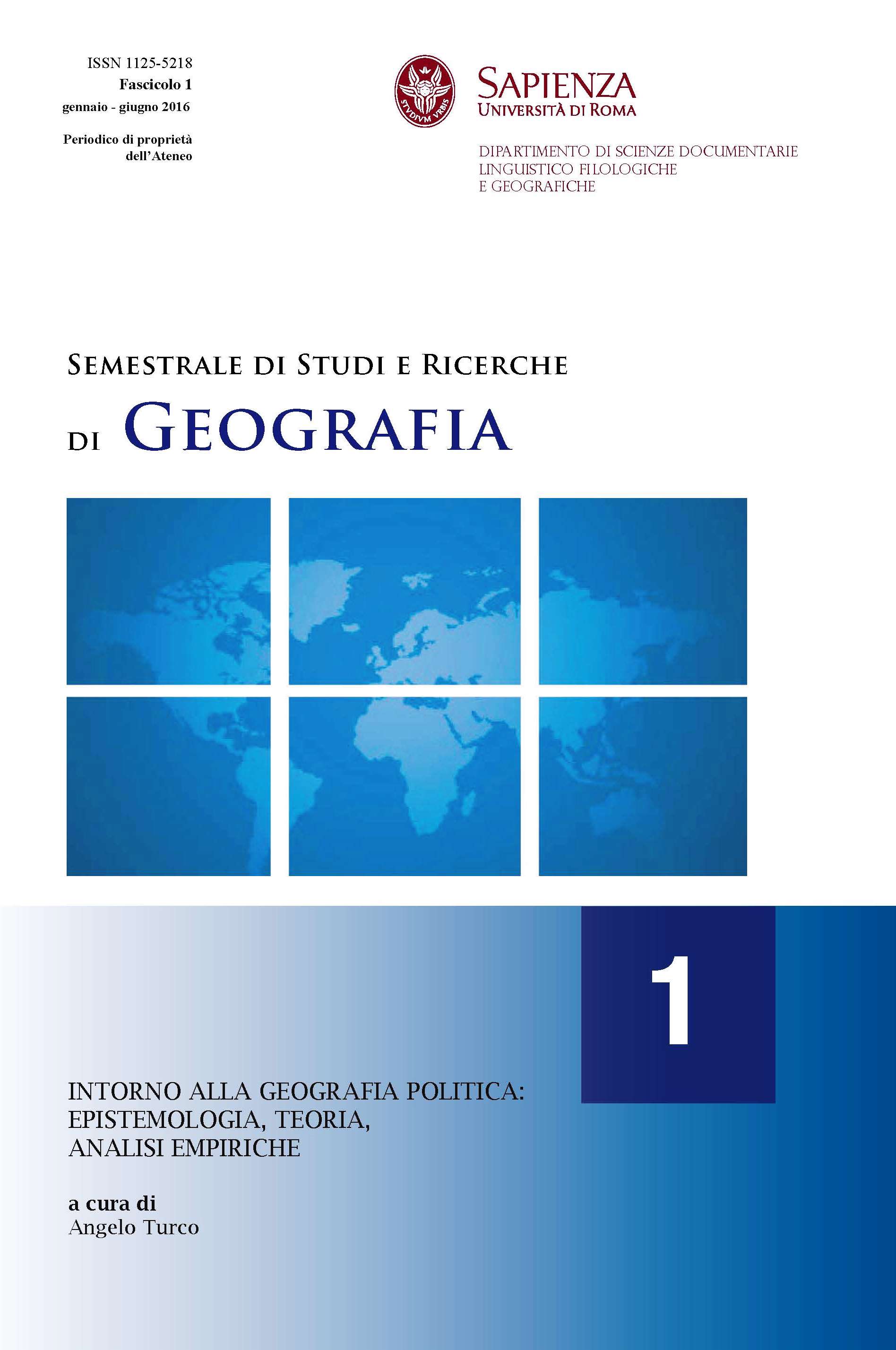A un passo diverso: geografia politica e cartografia di fronte ai poteri statuali
DOI:
https://doi.org/10.13133/1125-5218.15068Abstract
Going at a different pace: Political Geography and Cartography before the authority of the State
The relationship between geography and cartography has waited a long time to be clarified. The absence of serious reflection on the subject has perpetuated antiquated stereotypes and widened the divide between those for whom this relationship already seems tired and those who potentially consider it ever more fruitful. The former warn of an increasingly sharp and professional distinction between those who produce geographical knowledge and those who create maps, while the latter, on the other
hand, confidently assess this relationship in the context of new forms of convergence between visuality and geography. Without wishing to propose a systematic and historic reconnaissance of the ‘geography-cartography-authority’ triangle, which would require a great deal of space, this article intends to supply an ‘ordered’ contribution to a historical event that still bears unexplored passages. To that purpose, we will ask whether and how the expressive forms of cartography, in their political senses, are connected to the evolution of the discipline of political geography.
À un rythme différent: géographie politique et cartographie face à l’autorité de l’État
Le rapport entre géographie et cartographie attend depuis longtemps d’être éclairci. L’absence d’une réflexion sérieuse sur le sujet a laissé perdurer de vieux stéréotypes et a accentué l’écart entre ceux pour qui ce rapport semble désormais dépassé et ceux pour qui il est potentiellement de plus en plus fructueux. Les premiers voient une distinction professionnelle toujours plus nette entre ceux qui produisent la connaissance géographique et ceux qui réalisent les cartes, tandis que les seconds, au contraire, envisagent avec optimisme ce rapport dans l’optique des nouvelles formes de convergence entre visualité et géographie. Sans vouloir proposer un aperçu historique systématique
du triangle géographie-cartographie-autorité, ce qui nécessiterait beaucoup
plus d’espace, cet article entend contribuer à une «mise en ordre» d’une question historique qui présente des passages encore inexplorés. Dans ce but, on se demandera si et comment les formes expressives de la cartographie, dans leurs significations politiques, ont suivi l’évolution disciplinaire de la géographie politique.
##submission.downloads##
Fascicolo
Sezione
Licenza
Gli autori che pubblicano su questa rivista accettano le seguenti condizioni:- Gli autori mantengono i diritti sulla loro opera e cedono alla rivista il diritto di prima pubblicazione dell'opera, contemporaneamente licenziata sotto una Licenza Creative Commons - Attribuzione che permette ad altri di condividere l'opera indicando la paternità intellettuale e la prima pubblicazione su questa rivista.
- Gli autori possono aderire ad altri accordi di licenza non esclusiva per la distribuzione della versione dell'opera pubblicata (es. depositarla in un archivio istituzionale o pubblicarla in una monografia), a patto di indicare che la prima pubblicazione è avvenuta su questa rivista.
- Gli autori possono diffondere la loro opera online (es. in repository istituzionali o nel loro sito web) prima e durante il processo di submission, poiché può portare a scambi produttivi e aumentare le citazioni dell'opera pubblicata (Vedi The Effect of Open Access).


